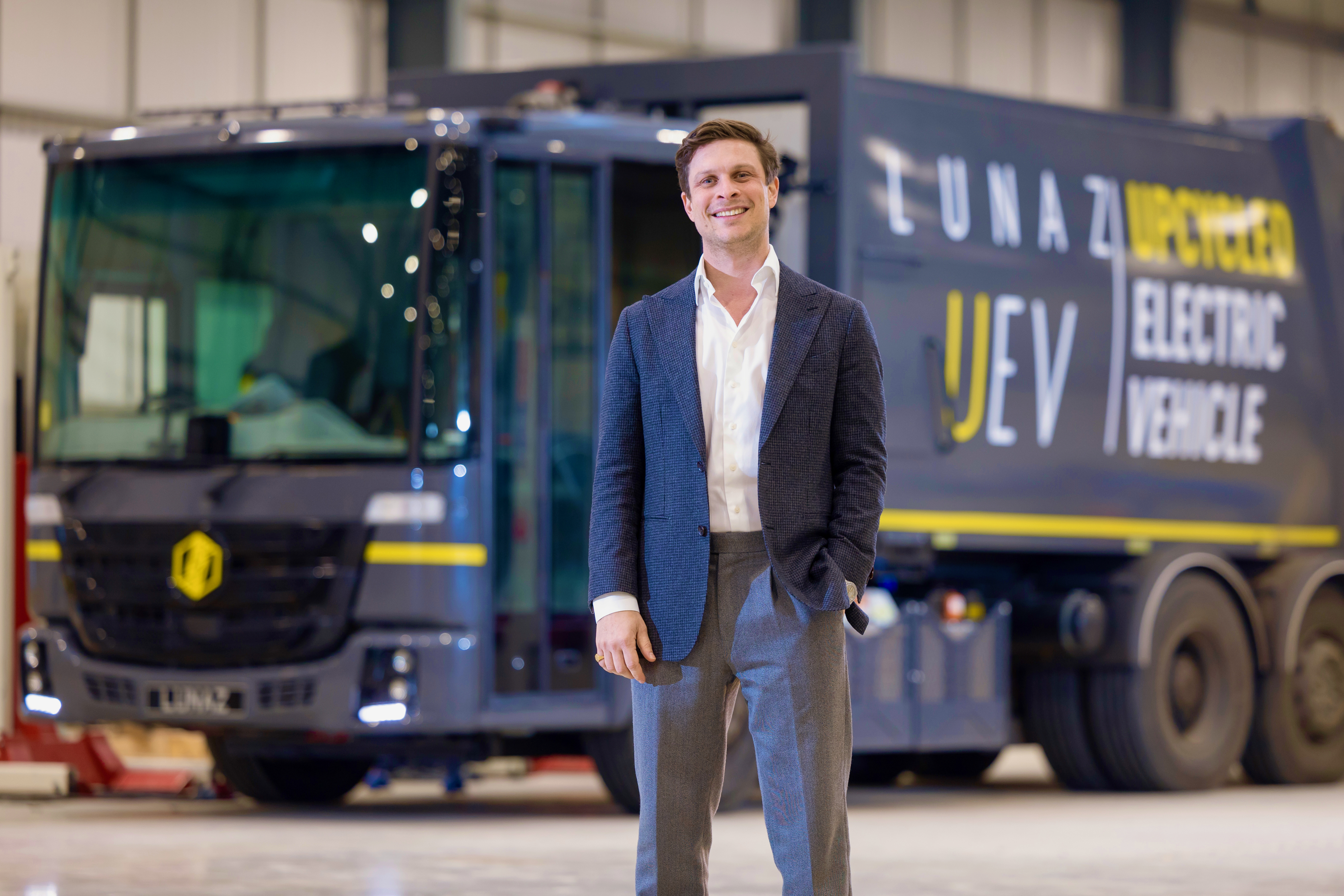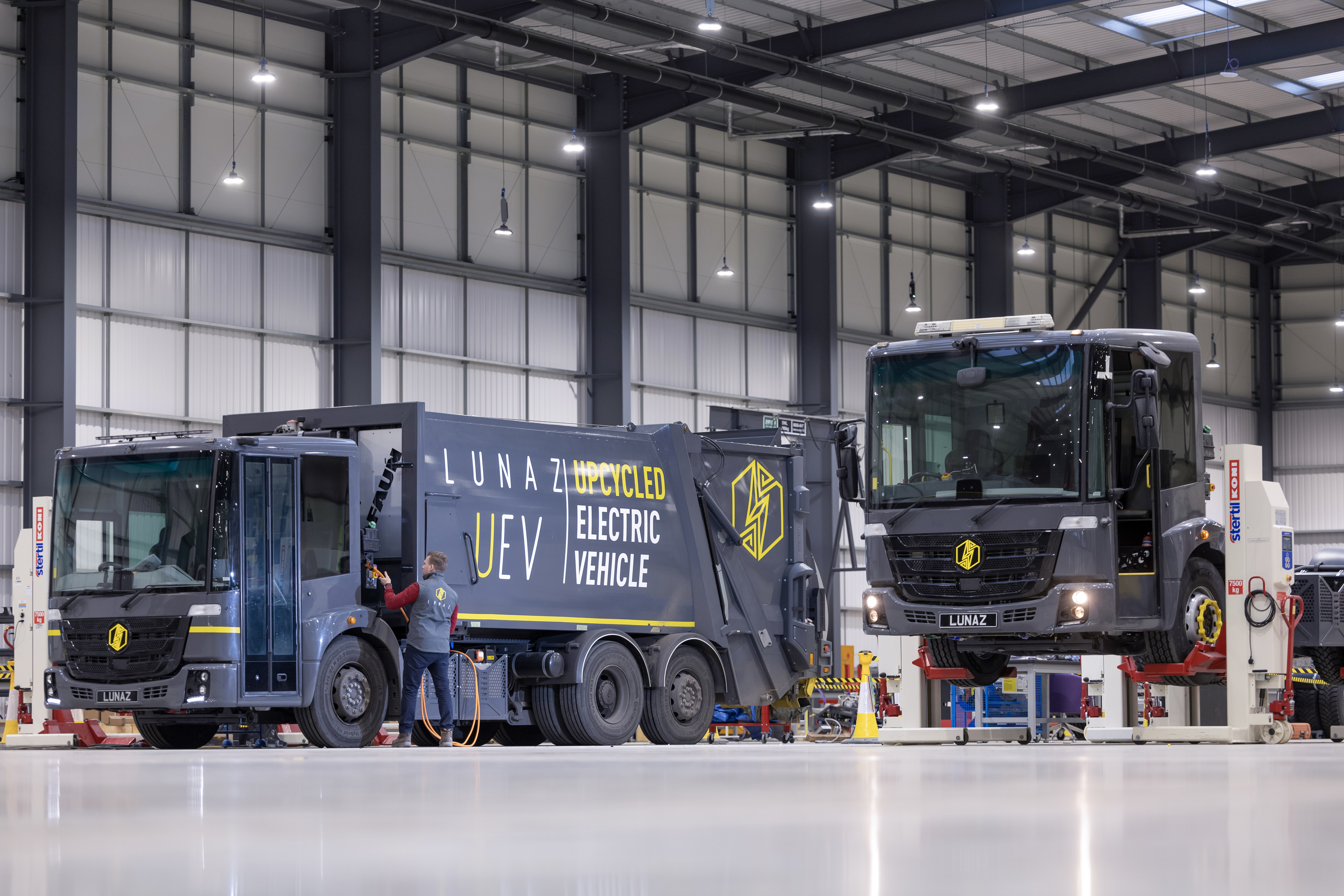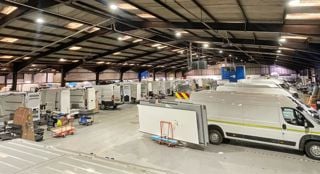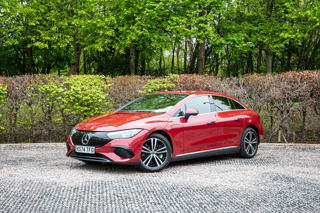Lunaz wants to deliver a more ecologically viable and cost-effective solution for transitioning internal combustion engine (ICE) vehicles to electric.
Having made a name for itself by electrifying some of the most celebrated classic cars in history, Lunaz is now focusing on upcycling, re-engineering and electrifying commercial vehicles, starting with refuse trucks.
The firm remanufactures the vehicle to remove the diesel engine, swapping for its own environmentally-friendly electric powertrain. At the same time, it upgrades the cabin to be safer and more ergonomic for the driver.
David Lorenz, founder and chief executive officer of Lunaz, believes that the most sustainable vehicle is the one that already exists, which is then upcycled to run on electric power. He says:
“The more raw materials, the more carbon we use, the less likely we are to recover from the environmental impact we’ve caused to-date by scrapping previously manufactured cars, trucks and other fleet vehicles.”
VEHICLES STRIPPED
Its upcycling process for refuse trucks begins with an initial inspection and removal of the rear body, reclaiming the vehicle’s lubricants and other fluids, and stripping it to a bare chassis.
This is shot-blasted using steel materials that can be reclaimed and reused more than 200 times, before being painted with hardwearing materials normally used on jet engine fan-blade housings for maximum longevity.
All external and internal vehicle plastics are repaired and recoated – what is not reusable, down to the nylon in the seatbelt cord, is recycled.
The electrical circuits, air lines, bushings and brake systems are renewed with recycled components built by OEM suppliers.
Meanwhile, advanced monitors are fitted in place of the wing mirrors to improve all-round visibility and safety; the analogue dashboard instruments are replaced with three screens, giving the upcycled electric vehicle (EV) a five-star Driver Vision Standard (DVS) rating.
The original internal combustion engine is removed, decommissioned and sent for recycling. Lunaz then fits its proprietary electric powertrain to the vehicle, which includes a modular battery designed for the specific route where the upcycled EV will operate.
MODULAR BATTERY
Lorenz says the modular design of the Lunaz electric battery means it can be scaled up and down for fleets to provide a vehicle that is correct for the duty cycle.
"As we move to EVs, I think how we spec a vehicle for a fleet operator needs to play a real prominent role,” he adds. “Just buying a large battery pack on a vehicle, especially in something that has payload affected such as a refuse truck, you need to buy for the requirement of the duty cycle.
"We go out on the routes, we data log every vehicle within a fleet, we realise the requirements for each vehicle and then we specify what is the correct battery size for that route.
"It allows you to have a vehicle at the correct cost, because you do not want to over-specify batteries that are not in use that will also increase the weight of the vehicle which, therefore, increases payload.”
RAIL AND AVIATION
With a focus on being “cheaper and greener”, upcycling a refuse vehicle will cost more than replacing it with a diesel vehicle, but less than an EV, according to Lorenz.
"We've just got to look at product life, how we can extend it, and how we can improve the vehicle and the base vehicle that was already there," he says.
An independent study has shown that the new, upcycled refuse truck carries over 82% of the carbon embedded in the original vehicle.
"I'm really proud of that,” Lorenz adds.
“We look at every component, every part which we can carry over. We carry over as much as possible that hasn't come to the end of its product life.”
The rail and aviation industries have a long history of upcycling parts. Rather than throwing something away, it is re-used or re-engineered.
“All we're doing is replicating what's done in other industries,” explains Lorenz.
"If a fleet operator is replacing 1,000 vehicles with EVs or a mixture of electric and hydrogen, those old vehicles are going to end up in a less privileged country, where they're going to produce more emissions. All we're going to do is push the emissions crisis into different locations around the world and we're not going to actually address the crisis we're trying to solve.
"At Lunaz, for every vehicle that comes out of our door, we lower the emissions by one, we will not be selling the engines, we will be lowering emissions with every vehicle that comes out of our factory."
MULTIPLE APPLICATIONS
The Lunaz Group remanufactures and electrifies passenger, commercial and industrial vehicles through three distinct companies.
Lunaz Design revives, re-engineers and converts classic cars to electric powertrains, while Lunaz Applied Technologies upcycles and re-engineers specialist industrial fleet vehicles to factory-new standard and converts them to the Lunaz proprietary electric powertrain.
Lunaz Powertrain, meanwhile, provides the Lunaz proprietary modular powertrain as a turnkey, white-label product for OEMs, tier one suppliers and independent automotive engineering businesses.
Its upcycled refuse truck is based on the Mercedes-Benz Econic platform. "The refuse trucks are just the beginning,” says Lorenz. “The Mercedes Econic platform has multiple uses.
"It's key that we look at all of these industrial vehicles, and there's just so many within these vehicle classes that are correct for this application."
Lorenz (pictured below) launched the business in 2018 on the back of a six-page business plan that had a spider diagram of an EV powertrain in the middle and about 53 applications around it, including ambulance, fire engines, refuse trucks and classic cars.

After proving the concept with the launch of the world’s first electric Bentley, Rolls-Royce, Range Rover and Jaguar sportscars, Lunaz secured growth capital investment in 2021 from leading institutional names including: the Barclay, Reuben and Dallal families as well as football icon David Beckham (pictured above right).
However, key to the company’s success was persuading former Renault F1 technical director Jon Hilton to buy into Lorenz’s vision.
“I pitched him the business four times and, unfortunately, he politely declined," he says. However, Lorenz’s persistence paid off and the pair opened their first facility at Silverstone five years ago.
FORMULA 1 WINNER
Co-founder Hilton, who is managing director of the Lunaz Group and technical lead, built his reputation in Formula One, winning Fernando Alonso’s successive world championships with Renault.
Hilton’s career started by engineering the powertrains for a successful helicopter world speed record at Rolls-Royce. He then moved to the development of powertrains for motorsport.
He later founded his hybrid powertrains company to exploit the potential of applications beyond F1 by the introduction of new kinetic recovery systems (KERS). It was here that he engineered pioneering hybrid powertrain conversions for performance passenger cars and industrial vehicles.
While developing this cutting-edge clean-air technology, Hilton also technically directed the first hybrid Le Mans entry for Hope Polevision Racing, sparking a passion for alternative powertrains.
GROWING FOOTPRINT
The Lunaz Group has committed long-term to Britain and specifically Silverstone as its global HQ. This reflects the UK’s standing as a leader in the development of electric powertrains, it says.

It expanded its upcycling campus at Silverstone Technology Park last summer, adding 140,000 sq ft to the company’s existing facilities, quadrupling its remanufacturing and electrification footprint, enabling it to produce up to 1,100 vehicles per year.
From this global R&D and technical HQ, the Lunaz Group will manage a network of manufacturing facilities placed in proximity to its major global markets.
The company is already in discussions with European governments seeking to attract fast-growth clean-technology engineering businesses.
North America is also firmly in the company’s sights with advanced discussions underway with individual States seeking to build long-term clean tech jobs growth.
> Interested in comparing electric vehicle data? Check out our EV tool.
> Interested in ensuring the efficient use of EVs. Check out our dedicated editorial sections: Insight & policy | EV news | Charging & infrastructure | Costs & incentives | Benefit-in-kind | EV case studies | EV road tests























Login to comment
Comments
No comments have been made yet.